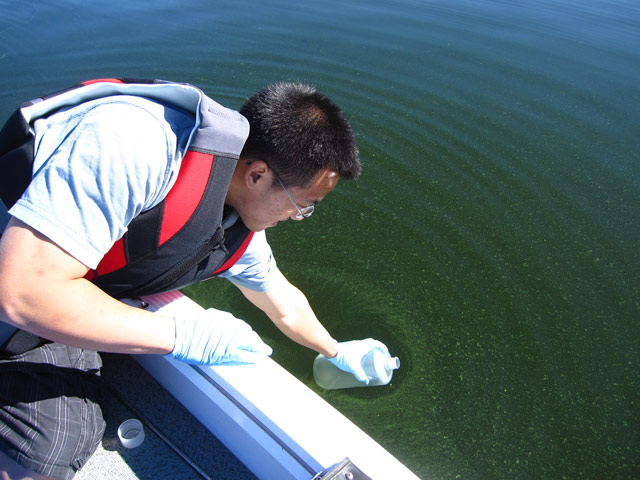Water quality goes with the flow
For IMMEDIATE RELEASE
December 8, 2015

University of Saskatchewan toxicology student Tim Tse takes samples at Lake Diefenbaker. (Photo credit: Lorne Doig)
Ann Arbor, Mich. — A special issue on the aquatic ecosystem health of Lake Diefenbaker (Saskatchewan, Canada) identified river water flow as the principal factor affecting water quality. The issue is composed of 15 articles that assess the reservoir’s susceptibility to increasing stress.
“Lake Diefenbaker is an important source of drinking water, irrigation, hydroelectricity and recreation for the province, yet we had little baseline knowledge or historical data on the reservoir, as a whole, when it comes to ecosystem health,” said Rebecca North, GIWS research associate and one of the guest editors working on the issue. “Our goals were to understand how the reservoir has changed since its formation, and to identify stressors affecting its water quality.”
While there has been public concern about the potential for declining Lake Diefenbaker water quality, especially related to surface algal blooms, researchers found little evidence that supported this perception. North explained that the low frequency of algal blooms may be attributed to the mixing effect of windy conditions, and a combination of high water flows, low light penetration due to murky water and low phosphorus in the upper water column of the reservoir.
“In addition to nutrient concentrations, it seems that the flow into the reservoir has the greatest impact on water quality,” said North. “This could be a concern with increasing temperatures and lower water flows due to climate change. We happened to study the reservoir during a time of very high water levels and flooding in the province.”
More than half of the papers in the special issue identified changes in hydrology as a principal factor affecting water quality.
The International Association for Great Lakes Research is a U.S. 501(c)(3) and Canadian nonprofit organization.
© 2024 International Association for Great Lakes Research

